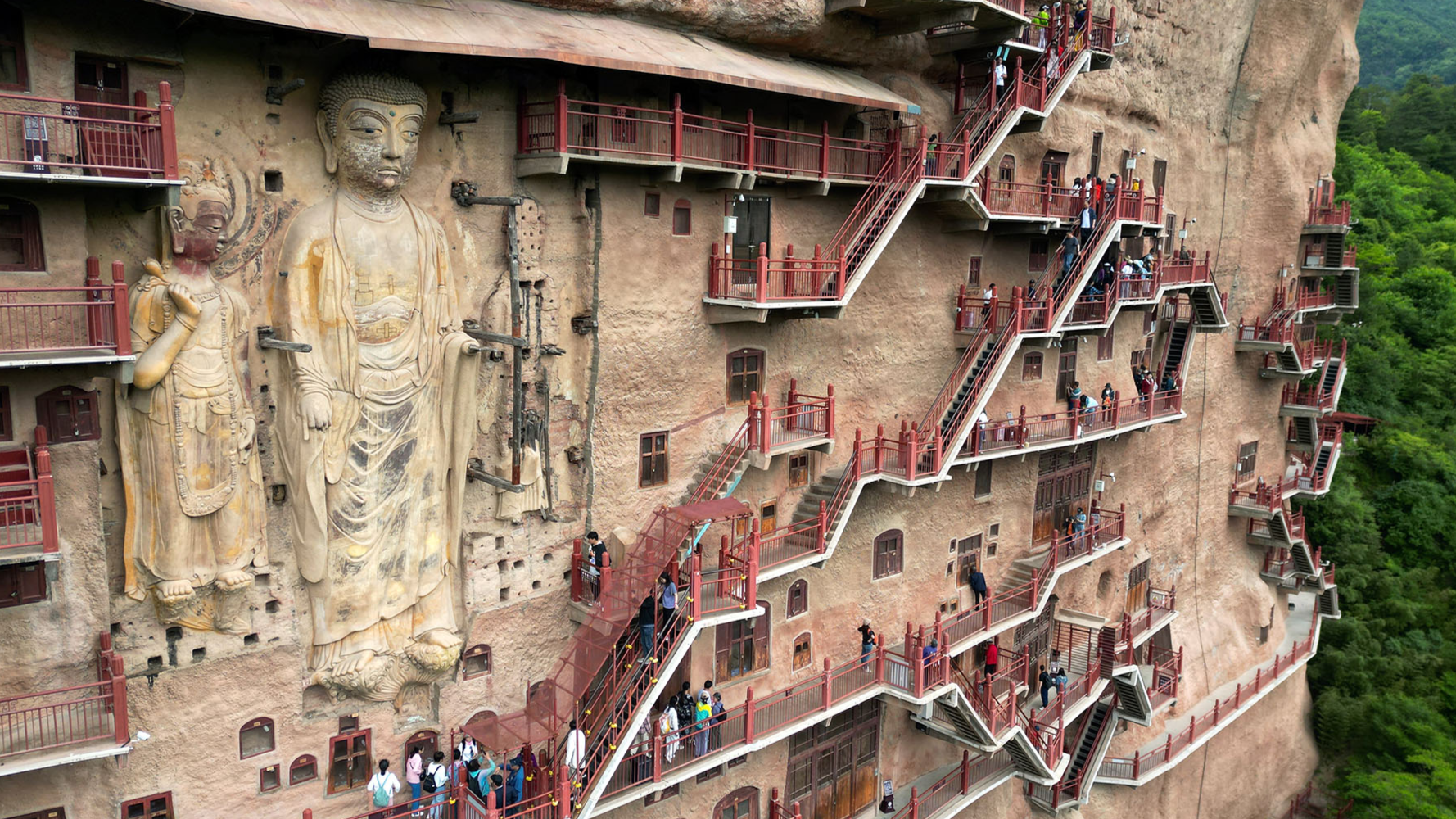
LANZHOU - A large-scale seismic monitoring network, a leading one for grottoes in China, has been completed at the Maijishan Grottoes in Northwest China's Gansu province Tuesday, one of the country's four major cave complexes.
The system aims to enhance earthquake early warning capabilities for the 1,600-year-old UNESCO World Heritage Site, historically damaged by earthquakes, while providing a model for safeguarding other grottoes nationwide.
The monitoring network integrates over 200 seismic stations within a 100-kilometer radius of the grottoes and six stations on the cliff, according to Zhou Weidong, a senior engineer at the Gansu Earthquake Agency.
The system enables real-time tracking of earthquake activity and vibrations through regular data transmission and 3D modeling, offering scientific support for customized anti-seismic strategies, according to the agency.
"The data will provide critical insights for future preservation and reinforcement efforts," Zhou noted.
In daily conservation work, engineers also utilize nodal seismometers to analyze vibration patterns across the walkways and cliff. Advanced damage identification technology helps identify structural issues with millimeter-level precision, guiding timely repairs.
READ MORE: Protection of major grottoes emphasized
The Maijishan Grottoes were inscribed on the World Heritage List in 2014. The site features 221 caves carved into a cliff, linked by 1.5 km of aerial walkways, with the highest pathway reaching over 70 meters above ground.


